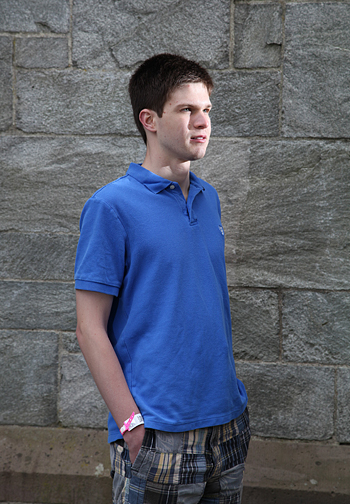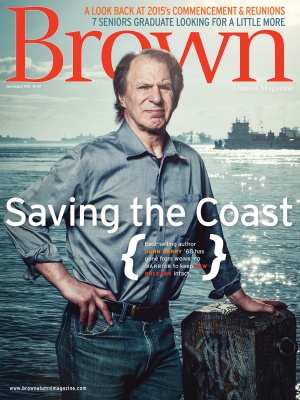One summer while a student at Brown, Nicholas Hilton ’15 worked in the R&D lab of a major soft drink company. “They wanted,” he says, “an objective way of determining sweetness and bitterness and other tastes as opposed to just having a team of taste testers give their subjective opinion.” So he spent his days looking through a microscope, trying to determine how many taste receptors reacted to various levels of sweetness. “It was interesting,” he says. “I really enjoyed it. Day to day, it was fascinating science. But I was looking for something . . . a little more.”

With that kind of an analytical mind, it’s not surprising that Hilton’s interest in science took hold at a very young age. In middle school and high school, he zeroed in on biology, but when it came time to choose a college, he looked for a place that would not restrain his wide-ranging curiosity. Brown’s flexible curriculum was a big draw.
“I like the idea of being able to choose,” he says. “I had the option to spread out and almost artificially construct a common core, and I could tailor that the way I wanted.” He joined a genetics lab in his sophomore year, then switched to an immunology lab the following year. There, under the direction of Professor of Pathology and Laboratory Medicine Jonathan Kurtis, and, with the help of a Royce Fellowship, he found his “a little more”: he worked on a malaria vaccine.
In his senior thesis, Hilton explains that “malaria is one of the deadliest diseases humanity currently faces, afflicting nearly 200 million people. . . . Additionally, children under five years old account for 78 percent of all malaria deaths in Africa.” Professor Kurtis and his colleagues, he says, had identified a group of children in Tanzania who had antibodies to certain malarial proteins. Researchers in his lab are trying to utilize these proteins to block the malaria parasite from leaving red blood cells, thus allowing the body’s immune system to destroy it. Hilton’s contribution to the research, the subject of his thesis, was to investigate one of these proteins further, using the process of phosphorylation to try to determine how the protein could be activated or deactivated. If the vaccine is ever adopted, Hilton will know he played a role in helping those child victims of malaria.
Hilton plans to work in another lab for a year or two—he hopes on an infectious disease—before applying to PhD programs. His ultimate goal is to become a researcher and to teach at an academic institution.
More profiles from the class of 2015:
After her family lost everything to Hurricane Katrina in 2005, G. Maris Jones ’15 reconsidered her dream of going to Brown.
Research by Hannah Begley ’15 suggests juries may be quicker to convict on weak evidence for certain pornography charges.
Clyde Lawrence ’15 wrote music for Miss Congeniality at age 6. He's also written for Hugh Grant and jammed with Steven Tyler.
Linh Tran ’15 spent two years helping fruit growers in her native Vietnam. She hopes you'll soon be drinking their fruit juice.
Sandra Kimokoti ’15 spent summer of her junior year in Kenya using sport to help girls open up about the challenges in their lives.
A single dad and a U.S. Navy veteran of nuclear submarines, Matthew Ricci ’15 is not your typical Brown student.





